
Key Points
- High Beta/Low Volatility Rebounds from Support
- Discretionary/Staples Rallies to a Key Resistance Point
- Growth/Value Continues to Move Higher
- Copper/Gold Finds Support, Will it Hold?
- High Yield Remains Weak vs. Treasuries
Key Themes and Relationships
High Beta vs Low Volatility
The High Beta/Low Volatility ratio has bounced from support to retake the 50-day moving average. The ratio must still contend with price-based resistance and the declining 200-day moving average before an all-clear can be given. Breaking those levels would confirm that investors are willing to take on more risk in their portfolios. The 14-day RSI has crossed above 60, responding to the waning downside momentum we highlighted in last week’s note.
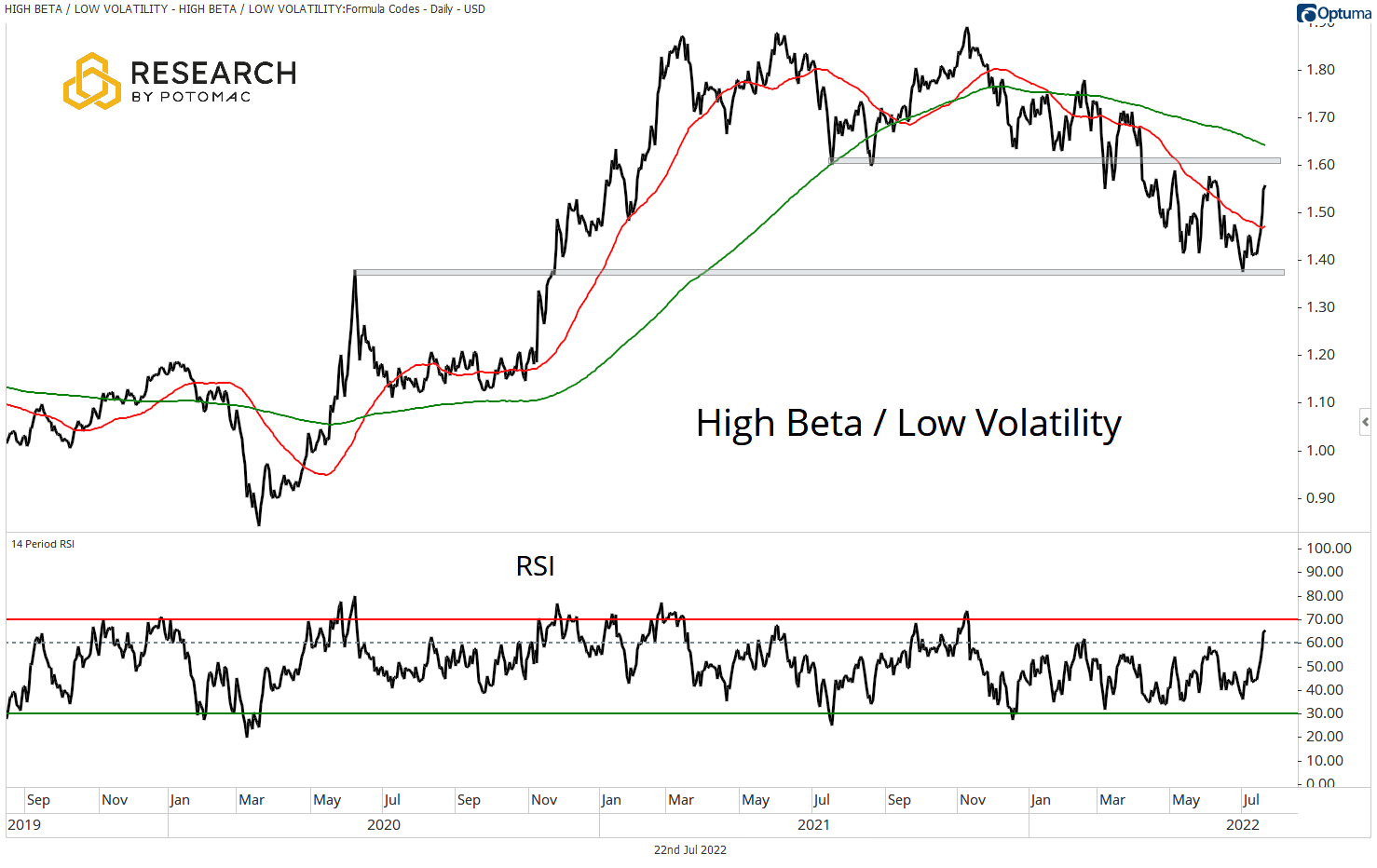
Consumer Discretionary vs Consumer Staples (Equal Weight)
The Discretionary/Staples ratio has rallied through the 50-day moving average into a key resistance zone at the pre-COVID consolidation. Breaking above this zone would set the stage for a test of the declining 200-day moving average and signal a change in risk appetite on the part of investors. The 14-day RSI has crossed above 60, a sign that momentum may be shifting.
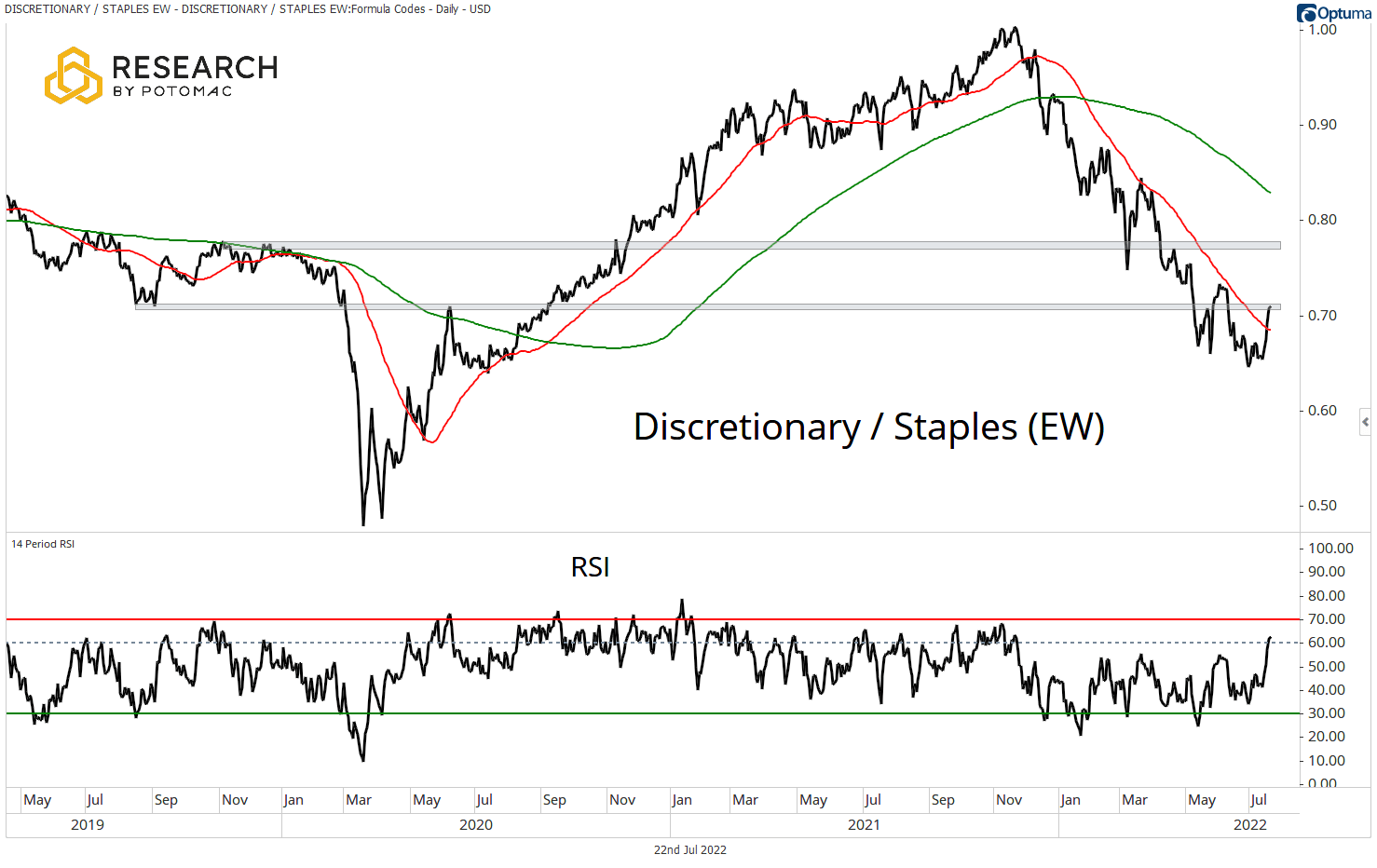
Growth vs. Value (Large Cap)
The Growth/Value ratio continues to move beyond the 50-day moving average after retaking broken support in the prior week. Above these two key support points, the door is open for an attack on the declining 200-day moving average. The 14-day RSI has crossed above 60 and is moving toward an overbought condition as it tries to shift into a bullish regime.
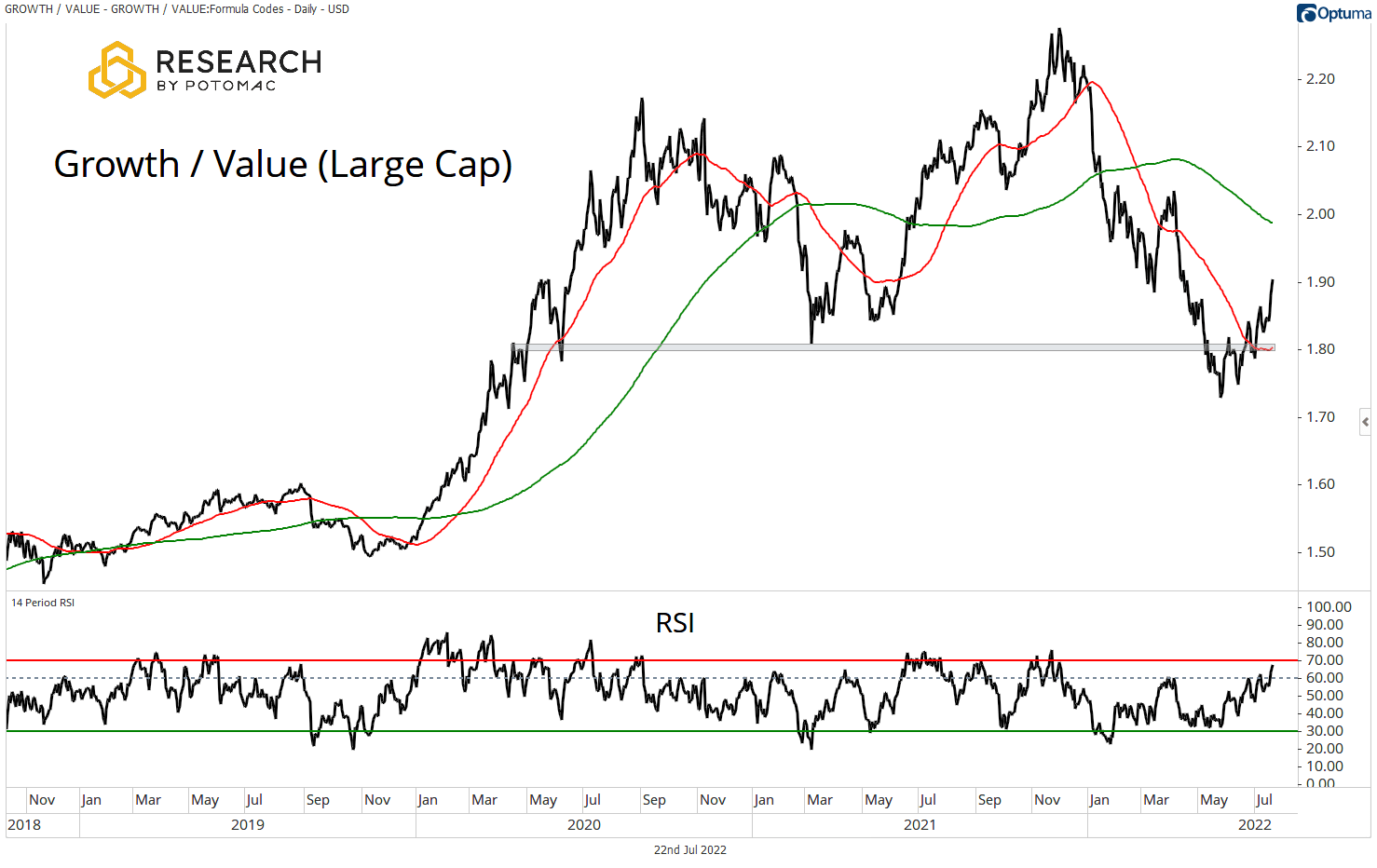
Small Caps vs. Large Caps
The Small Cap/Large Cap ratio remains in a consolidation zone as it oscillated around the pinched 50 and 200-day moving averages. We are still looking for a clear break from the zone. A move above the October/November peaks would confirm a bullish trend and greater risk appetite on the part of investors. A break of support would send the opposite message. There is a slight edge to an upside breakout as the 14-day RSI has held above the 40-level of late.
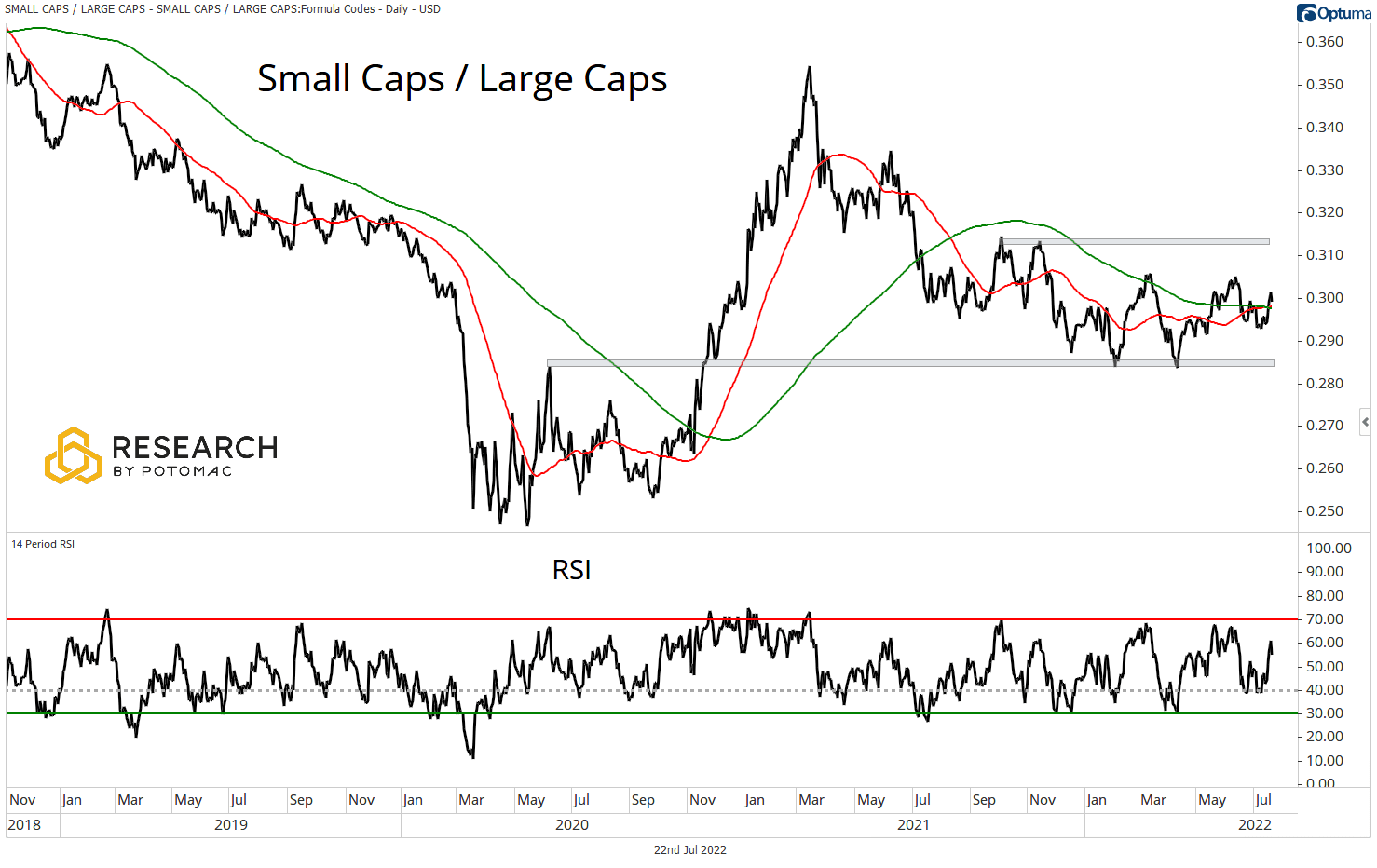
Lumber vs. Gold
The Lumber/Gold ratio continues to do battle with the declining 50-day moving average below the flat 200-day moving average. The bias remains to the downside with price below the moving averages, and the RSI stuck below 60.
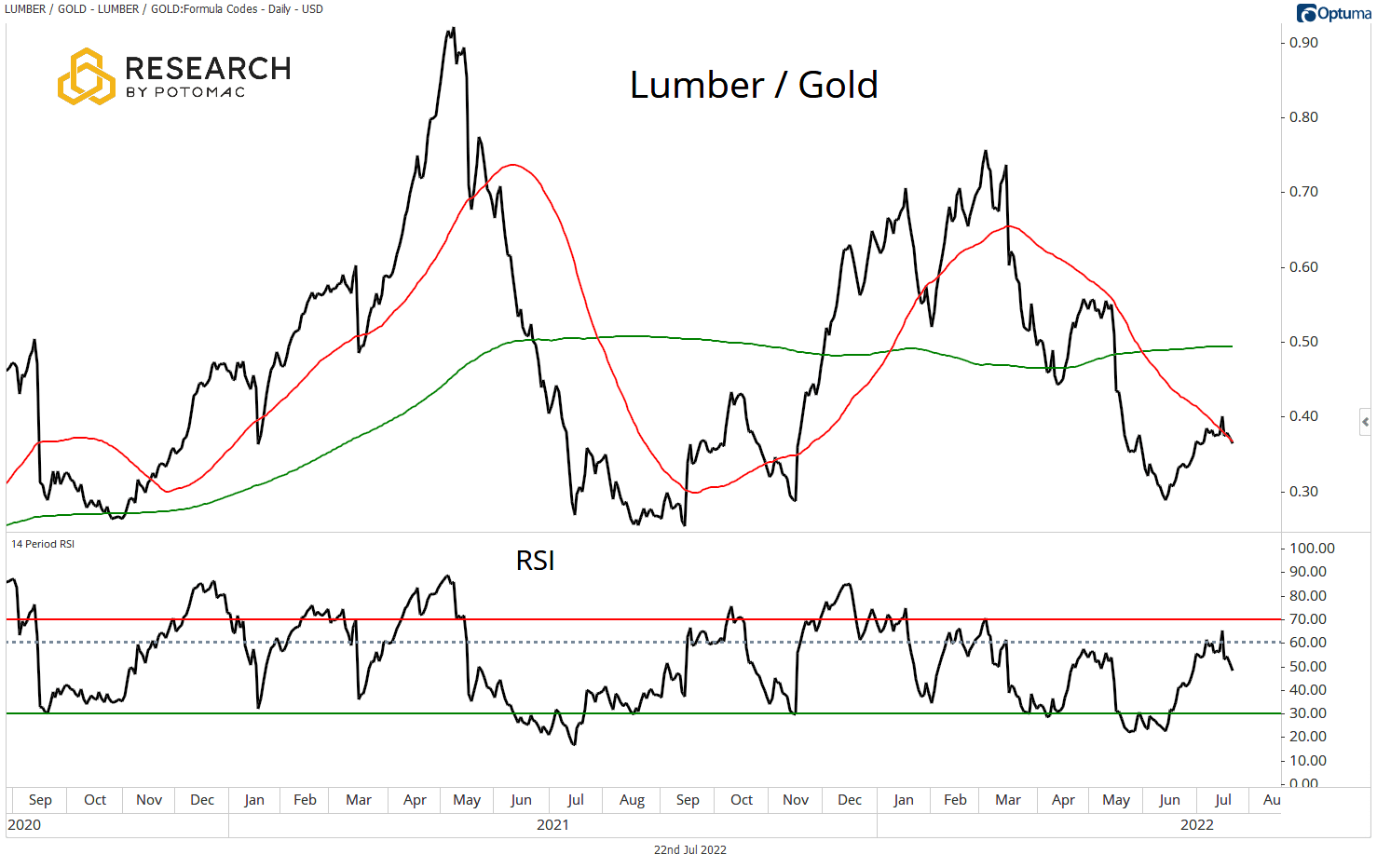
Copper/Gold
The Copper/Gold ratio has found support at the pre-COVID levels but remains well below the declining 50 and 200-day moving averages. Momentum has rebounded from oversold conditions but continues to trade in a bearish regime.
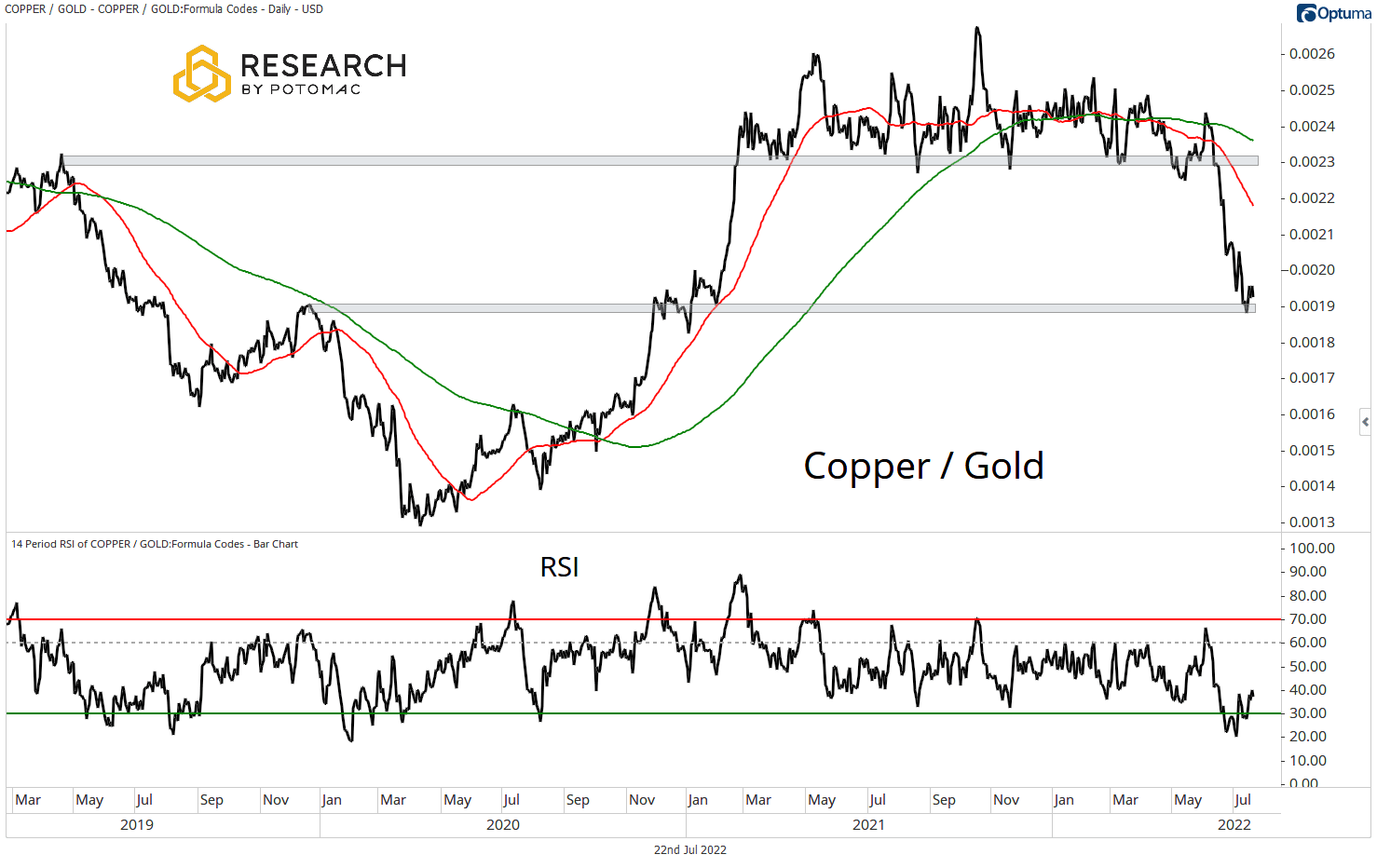
High Yield vs Treasuries
The High Yield to Treasuries ratio has rebounded with risk assets this week and has retaken the declining 50-day moving average. However, price-based resistance and the declining 200-day moving average still loom overhead. Momentum remains in a bearish regime, below the 60-level.
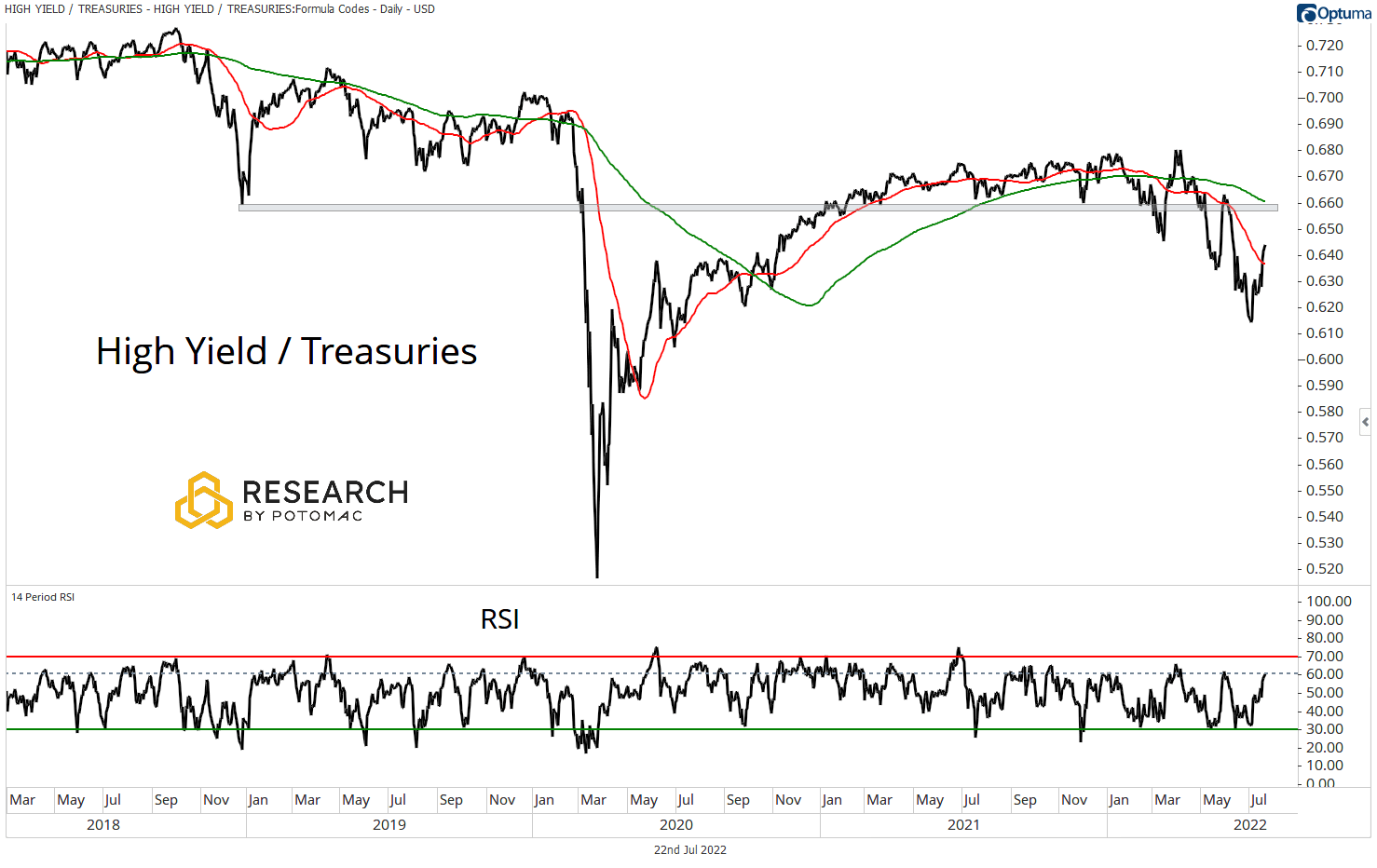
Take-Aways
This week has seen some risk appetite return to the market as many of the themes that we track have moved higher. These improvements are a step in the right direction for equity bulls, but many must still clear important resistance levels before the case can be made that the trends have changed. We remain intrigued by the performance of Growth vs. Value as its rebound continues this week. Finally, the commodity themes continue to point to slowing economic growth.
Disclosure: This information is prepared for general information only and should not be considered as individual investment advice nor as a solicitation to buy or offer to sell any securities. This material does not constitute any representation as to the suitability or appropriateness of any investment advisory program or security. Please visit our FULL DISCLOSURE page.
